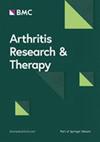Streamlined, single-step non-viral CRISPR-Cas9 knockout strategy enhances gene editing efficiency in primary human chondrocyte populations
IF 4.9
2区 医学
Q1 Medicine
引用次数: 0
Abstract
CRISPR-Cas9-based genome engineering represents a powerful therapeutic tool for cartilage tissue engineering and for understanding molecular pathways driving cartilage diseases. However, primary chondrocytes are difficult to transfect and rapidly dedifferentiate during monolayer (2D) cell culture, making the lengthy expansion of a single-cell-derived edited clonal population not feasible. For this reason, functional genetics studies focused on cartilage and rheumatic diseases have long been carried out in cellular models that poorly recapitulate the native molecular properties of human cartilaginous tissue (e.g., cell lines, induced pluripotent stem cells). Here, we set out to develop a non-viral CRISPR-Cas9, bulk-gene editing method suitable for chondrocyte populations from different cartilaginous sources. We screened electroporation and lipid nanoparticles for ribonucleoprotein (RNP) delivery in primary polydactyly chondrocytes, and optimized RNP reagents assembly. We knocked out RELA (also known as p65), a subunit of the nuclear factor kappa B (NF-κB), in polydactyly chondrocytes and further characterized knockout (KO) cells with RT-qPCR and Western Blot. We tested RELA KO in chondrocytes from diverse cartilaginous sources and characterized their phenotype with RT-qPCR. We examined the chondrogenic potential of wild-type (WT) and KO cell pellets in presence and absence of interleukin-1β (IL-1β). We established electroporation as the optimal transfection technique for chondrocytes enhancing transfection and editing efficiency, while preserving high cell viability. We knocked out RELA with an unprecedented efficiency of ~90%, confirming lower inflammatory pathways activation upon IL-1β stimulation compared to unedited cells. Our protocol could be easily transferred to primary human chondrocytes harvested from osteoarthritis (OA) patients, human FE002 chondroprogenitor cells, bovine chondrocytes, and a human chondrocyte cell line, achieving comparable mean RELA KO editing levels using the same protocol. All KO pellets from primary human chondrocytes retained chondrogenic ability equivalent to WT cells, and additionally displayed enhanced matrix retention under inflamed conditions. We showcased the applicability of our bulk gene editing method to develop effective autologous and allogeneic off-the-shelf gene therapies strategies and to enable functional genetics studies in human chondrocytes to unravel molecular mechanisms of cartilage diseases.简化的单步非病毒 CRISPR-Cas9 基因敲除策略提高了原代人类软骨细胞群体的基因编辑效率
基于 CRISPR-Cas9 的基因组工程是软骨组织工程和了解驱动软骨疾病的分子通路的强大治疗工具。然而,原代软骨细胞很难转染,而且在单层(2D)细胞培养过程中会迅速发生再分化,因此长时间扩增单细胞衍生的编辑克隆群体并不可行。因此,长期以来,有关软骨和风湿病的功能遗传学研究都是在细胞模型中进行的,这些模型很难再现人体软骨组织的原生分子特性(如细胞系、诱导多能干细胞)。在此,我们着手开发一种非病毒 CRISPR-Cas9、适合不同软骨来源的软骨细胞群体的批量基因编辑方法。我们筛选了在原发性多发性软骨细胞中进行核糖核蛋白(RNP)递送的电穿孔和脂质纳米粒子,并优化了 RNP 试剂的组装。我们在多发性软骨细胞中敲除了核因子卡巴B(NF-κB)的一个亚基 RELA(又称 p65),并通过 RT-qPCR 和 Western Blot 对敲除(KO)细胞进行了进一步鉴定。我们在不同软骨来源的软骨细胞中测试了 RELA KO,并通过 RT-qPCR 鉴定了它们的表型。我们检测了野生型(WT)和 KO 细胞颗粒在白细胞介素-1β(IL-1β)存在和不存在时的软骨生成潜能。我们确定电穿孔是软骨细胞的最佳转染技术,它能提高转染和编辑效率,同时保持较高的细胞活力。我们以前所未有的约 90% 的效率敲除了 RELA,证实与未编辑的细胞相比,IL-1β 刺激下的炎症通路激活更低。我们的方案可以很容易地移植到从骨关节炎(OA)患者身上采集的原代人类软骨细胞、人类 FE002 软骨滋养细胞、牛软骨细胞和人类软骨细胞系上,使用相同的方案达到了相当的平均 RELA KO 编辑水平。所有来自原代人类软骨细胞的 KO 颗粒都保留了与 WT 细胞相当的软骨生成能力,此外,在炎症条件下还显示出更强的基质保留能力。我们展示了批量基因编辑方法的适用性,该方法可用于开发有效的自体和异体现成基因治疗策略,还可用于人类软骨细胞的功能遗传学研究,以揭示软骨疾病的分子机制。
本文章由计算机程序翻译,如有差异,请以英文原文为准。
求助全文
约1分钟内获得全文
求助全文
来源期刊

Arthritis Research & Therapy
RHEUMATOLOGY-
CiteScore
8.60
自引率
2.00%
发文量
261
审稿时长
14 weeks
期刊介绍:
Established in 1999, Arthritis Research and Therapy is an international, open access, peer-reviewed journal, publishing original articles in the area of musculoskeletal research and therapy as well as, reviews, commentaries and reports. A major focus of the journal is on the immunologic processes leading to inflammation, damage and repair as they relate to autoimmune rheumatic and musculoskeletal conditions, and which inform the translation of this knowledge into advances in clinical care. Original basic, translational and clinical research is considered for publication along with results of early and late phase therapeutic trials, especially as they pertain to the underpinning science that informs clinical observations in interventional studies.
 求助内容:
求助内容: 应助结果提醒方式:
应助结果提醒方式:


